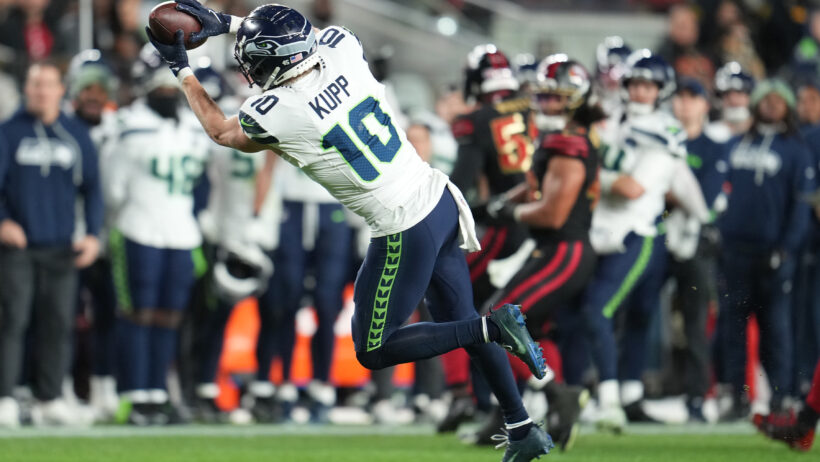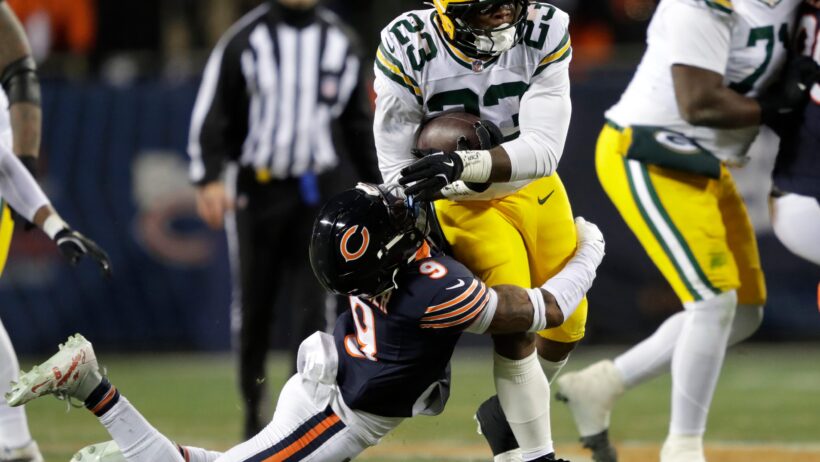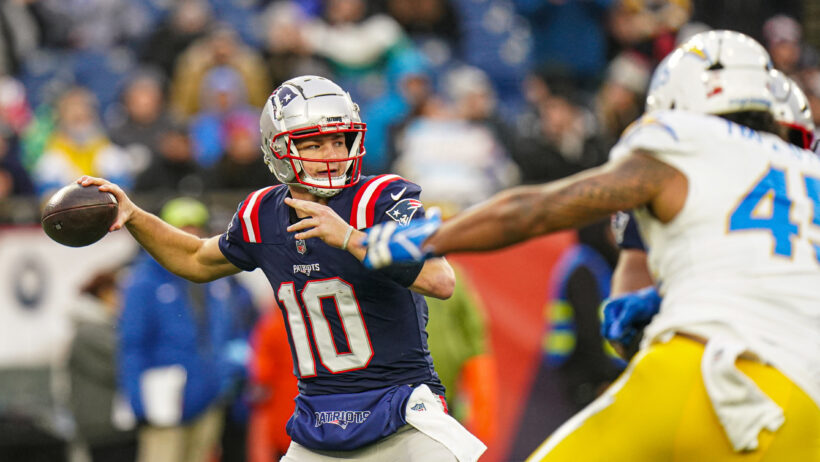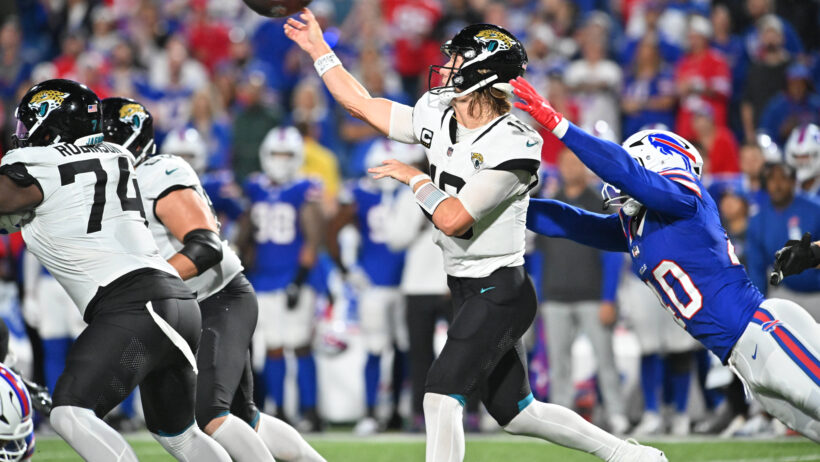How to Bet on March Madness: 2025 NCAA Tournament Betting Guide
By Sascha Paruk
Updated:
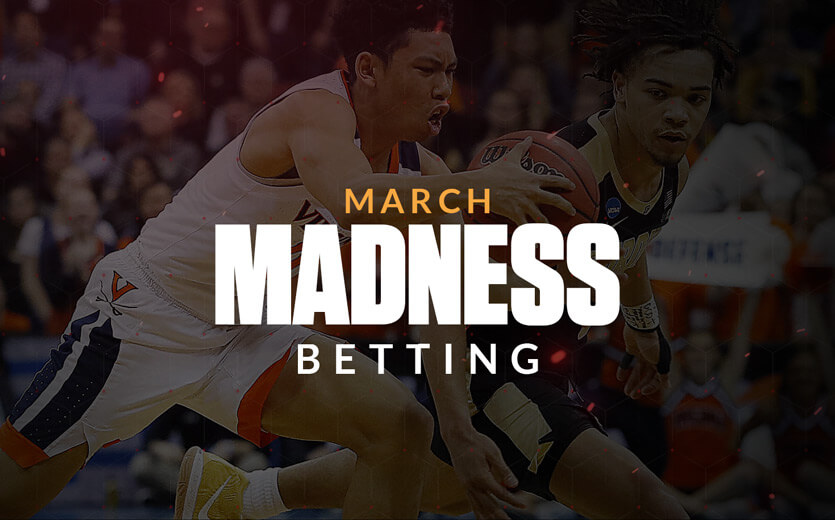
Learning how to bet on March Madness is easy with the right information. Whether you’re totally new to the game or you’re an OG KenPom subscriber ready to take the next step in your college basketball betting education, you can find the tips and tricks you need to be successful in this guide.
We have information on what types of bets you can make, where you can make them, and some information to inform how to make them, too.
Best March Madness Betting Sites for 2025
Before you start betting on March Madness, visit our favorite online sportsbooks to grab the best March Madness betting promo codes and bonuses.
How to Bet on March Madness 2025 Tournament
Below, we detail the most popular ways to bet on March Madness beyond run-of-the-mill bracket competitions. From betting the moneyline to betting against the spread, or wagering on March Madness futures, we demystify all the common NCAA Tournament betting options.
This is how to bet on march madness and win; following some basic March Madness betting advice will soon turn you into a sharp!
Bet on March Madness Games: Moneyline, Spread and Over/Under
As you browse through the best NCAA basketball betting sites, the first three bets you’ll see on any college basketball game will be the spread, total (over/under) and moneyline.
Here’s an example of odds at BetMGM for a recent regular season game:
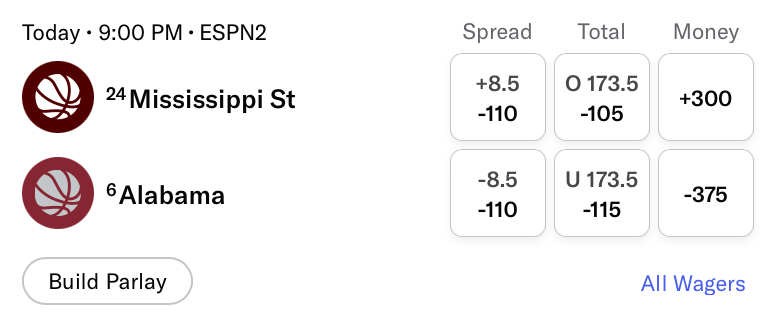
Let’s break these down:
- Spread: In this example, Alabama is the favorite, and must win by 9 points or more for your spread bet on the Tide to payout. If you bet Mississippi State on the spread, your bet wins as long as they only lose by 8 or less. A bet on either side of the spread, in this case, would pay the same, as the odds connected to each are -110 (bet $110 to win $100).
- Total: This is the total score of the game, and you can bet over or under that total. If the teams combine for 174 or more points, the Over cashes. If they combine for 173 or less, the Under does. For this game, the Over would payout slightly more.
- Moneyline: The easiest bet to understand, as you’re simply picking the winner. Alabama is favored, so a bet on it would pay considerably less. You’d need to bet $375 to make $100. Betting on the Bulldogs to win this game, however, would pay you $300 on a $100 bet (or $30 on a $10 bet … you don’t have to bet $100, it’s just the simplest way to convey the odds).
You’ll find these bets on games for each round of the NCAA Tournament: First Four, Round of 64, Round of 32, Sweet 16, Elite Eight, Final Four and NCAA Championship Game. You may find that moneylines are missing for some of he more lopsided Round of 64 matchups, but that’s become more and more rare in the men’s NCAA Tournament.
The allure of picking a massive upset and catching Fairleigh Dickinson at +1400 to beat Purdue is definitely there, and sportsbooks know it.
For more on how to approach these bets, check out our March Madness betting strategy guide.
Pick the NCAA Tournament Champion a.k.a. March Madness Futures
In addition to betting individual games, bettors can also wager on who will win the entire tournament. These are known as futures bets.
March Madness futures odds can be bet on year-round, from the moment the previous year’s champion is crowned, through the NCAA Tournament. Because of that, they obviously fluctuate quite a bit.
With the transfer portal, early NBA entrants and the impact of incoming freshmen having such a massive impact on college basketball, betting March Madness futures too far ahead is basically a dart throw. But you can certainly get a pretty good picture painted for you during the season.
When the Field of 68 is actually announced, that picture becomes even more clear, as you can see that potential matchups ahead.
Here’s what the 2025 Men’s NCAA Tournament champion odds look like at DraftKings as of late February:
The number next to each team indicates the payout on a $100 bet if that team wins it all. If you love Missouri, even a $10 bet could win you $300. Unfortunately for Tigers fans, Missouri sports betting apps won’t be online in time for this year’s tournament, but they will be around for the 2026 edition!
You can adopt the best strategies for picking a March Madness champion, but it’s crucial to recognize how difficult it is to win six straight games against quality competition. Even if a team has, on average, a 70% chance to win each of its games, that only amounts to an 11.8% chance to win all six.
Betting on March Madness Final Four Futures
Sports betting sites will also offer odds to get to the Final Four throughout the season and during the tournament. These odds are quite a bit shorter (for example, Auburn was -135 to make the Final Four on the same day it was +350 to win it all), but you also have more chances to win.
Bet on four teams to win the title, and only one — if any — could win. Bet on four teams to make the Final Four, and there’s the chance you could win all four bets.
Of course, anyone that’s filled out a March Madness bracket knows that picking the correct Final Four is easier said than done, but betting Final Four futures is a good way to hedge your bracket, or vice versa.
Once the tournament field is announced, you’re also likely to see futures for making the Sweet 16 and Elite Eight.
March Madness Prop Betting: Player Props and More
NCAA tournament prop bets are fun wagers that don’t have to do with a game’s outcome but rather on individual performances, key statistics, or specific happenings within the game or the tournament as a whole.
Player props have become the most popular bets made at online sportsbooks, and can be handled in a couple ways. You might see “Player to score X+ Points” which typically comes with only a “Yes” option. That just means the player has to hit that number or above for your bet to cash. These props have become more common as alternate lines populate sports betting markets, either for single bets or same-game parlays (SGPs).
The old fashioned way is an over/under, which you treat like the total bets we talked about earlier. Here’s an example from a Providence vs. Marquette matchup:
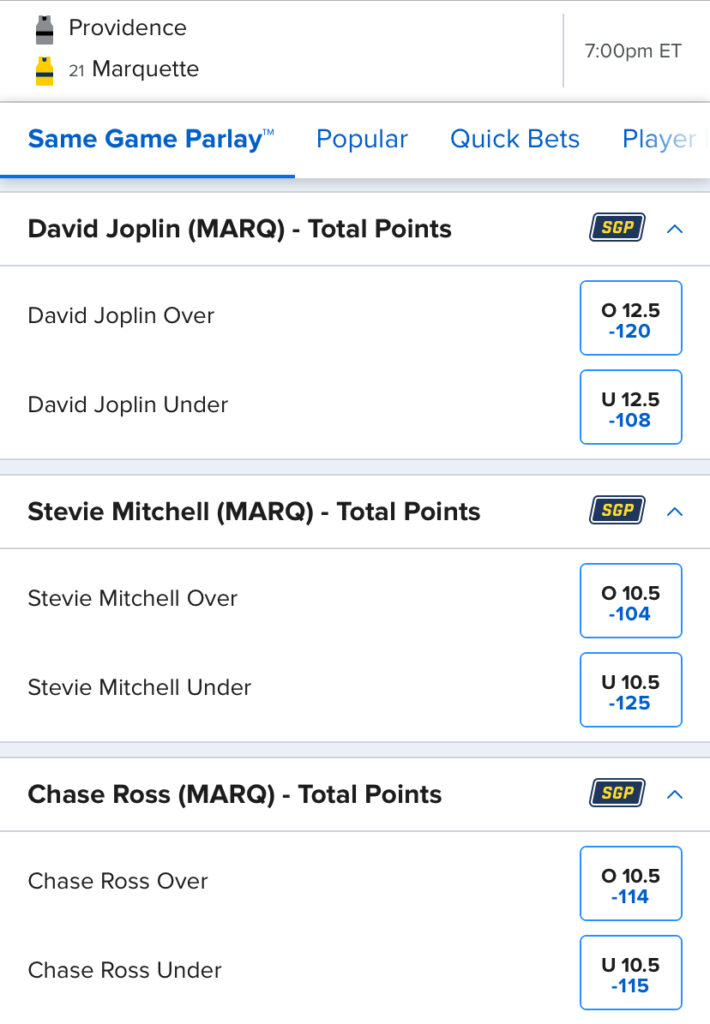
Prop bets go beyond player stats and are limited only by the oddsmaker’s imaginations, so you may find some rather entertaining March Madness props out there. That said, the most common March Madness prop bets are fairly straightforward. Examples include:
- Tournament MVP
- Highest-scoring player in a game, or highest-scoring game in a particular round
- Biggest margin of victory
Many NCAA tournament prop bets are structured as yes/no outcomes or over/under wagers. Your sportsbook will make your options clear and include the payout on all possible outcomes.
March Madness Betting Rules By State
Player props are incredibly popular, but at the college level, they’ve also become a little bit controversial. That’s led some states to ban them.
Here’s a list of states where college player prop betting is allowed.
- Arkansas
- Connecticut
- Delaware
- Indiana (pregame only)
- Kansas
- Kentucky
- Maine
- Michigan
- Montana
- Nevada
- New Jersey
- New York
- New Mexico
- North Carolina
- Rhode Island
- West Virginia
- Wyoming
Some states allow you to bet on March Madness (and other college sports), but DO NOT allow you to bet on in-state college teams or players:
- Connecticut
- Delaware
- Illinois
- Maine
- Massachusetts
- New Jersey
- New York
- Rhode Island
- Virginia
So, remember that amazing run St. Peter’s made a few years ago? New Jersey bettors couldn’t wager on it.
March Madness Odds
Virtually every US sportsbook has March Madness odds available, so expect to do some line shopping to find the best value. Don’t forget to consider the different March Madness promotions and welcome bonuses sportsbooks offer as well.
Sports Betting Dime can help you get started with finding the best March Madness odds. We track real-time college basketball odds and betting lines for upcoming games all season long and throughout the NCAA tournament. We make it easy for you to compare the lines across different books, and see where the money is.
A little more March Madness betting advice: if you’re planning on betting against the public, it’s best to wait around and let emotional bettors push the odds in your favor. On the flip side, if you’re planning to take the public bet, jumping in on the action early is likely the best decision.
More Ways to Bet on March Madness!
This introduction covers just the tip of the iceberg when it comes to learning how to bet on March Madness. Here are a few more options to add to your knowledge base of March Madness betting:
- Bet on the women’s March Madness tournament
- Live March Madness betting, know more on in-game wagering tips
- Bet first-half and second-half spreads and moneylines
- Wager on March Madness on the go, learn more about mobile betting
Enjoy the betting action this March, but be sure to wager responsibly. Never risk more than you can afford to lose.
How to Bet On March Madness FAQs
Still have questions on betting the NCAA tournament? Here are answers to a few how to bet on March Madness FAQs:
How do you bet on March Madness?
You can bet on March Madness in a variety of ways, including moneyline, point spread, totals, futures, and props to name a few.
Where can I bet on March Madness?
You can wager on the NCAA men's basketball tournament with sportsbooks like BetMGM, DraftKings, FanDuel, and Caesars Sportsbook. You can bet on March Madness in person and/or online depending on what state you're in.
Can I bet on a March Madness game after it starts?
Yes, although live betting on March Madness games is only allowed in certain states.

Managing Editor
Sascha has been working in the sports-betting industry since 2014, and quickly paired his strong writing skills with a burgeoning knowledge of probability and statistics. He holds an undergraduate degree in linguistics and a Juris Doctor from the University of British Columbia.
